Scaling Your SaaS: How to Make Sure Your Tech Stack Can Handle Rapid Growth
Get the latest updates about our blog posts.
Subscribe so you don’t miss out!
Key Takeaways
- Scalable architecture is crucial: Moving from monolith to microservices or modular monolith can ensure smooth scaling as user demand grows.
- Cloud-native infrastructure is non-negotiable: Platforms like AWS or GCP with auto-scaling capabilities enable your app to handle sudden traffic surges.
- Databases must grow with you: Use techniques like sharding and read replicas to manage increasing data loads efficiently.
- Performance optimization saves users: Caching, CDNs, and monitoring tools prevent lag, boost SEO, and reduce churn.
- Automation equals agility: CI/CD pipelines and automated testing help maintain speed, quality, and consistency as your product evolves.
The early days of launching a SaaS product are a whirlwind—building your MVP, finding product-market fit, and landing those first customers. But what happens when the demand picks up and your user base starts multiplying? Scaling your SaaS isn’t just about hiring more people or increasing your marketing budget. It starts with your technology stack. If your app can’t handle the pressure, growth becomes a liability instead of a success.
So how do you make sure the tech behind your SaaS is ready to grow with you?
Let’s dive into the technical foundations of scaling a SaaS product, including real-world examples, strategic advice, and proven best practices.
What is SaaS?
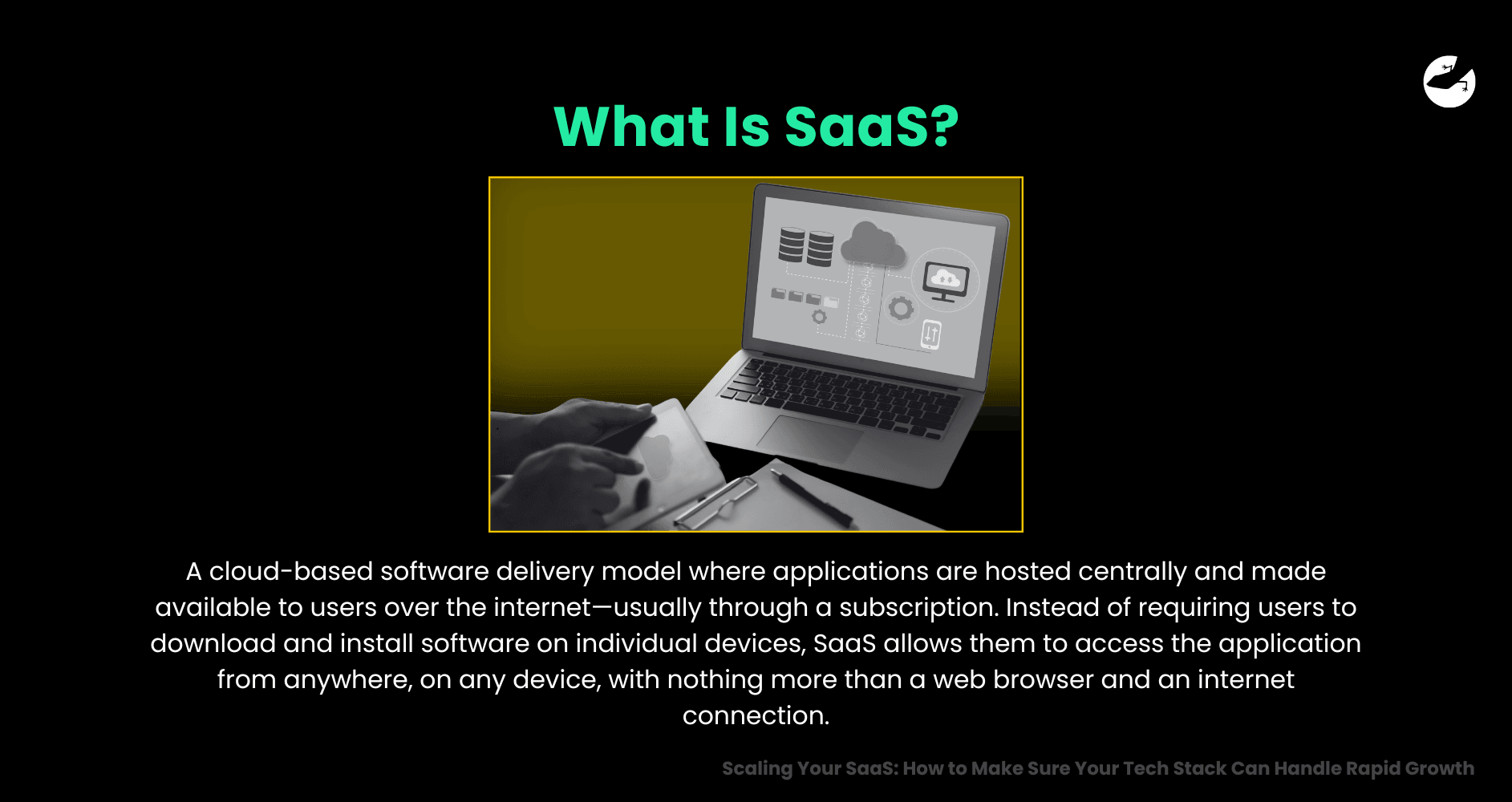
This model has revolutionized the way businesses and consumers use software. It eliminates the need for managing complex infrastructure, reduces upfront costs, and offers the flexibility to scale usage based on need. Think of tools like Slack for team communication, Google Workspace for productivity, HubSpot for CRM, or Shopify for e-commerce—all of these are SaaS platforms powering millions of users daily.
SaaS is particularly well-suited for businesses that want to grow fast, serve global markets, and innovate continuously. However, this growth potential comes with challenges—especially on the technical side. Ensuring your SaaS app can scale seamlessly to meet rising demand is key to long-term success.
That’s why it’s so important to understand what makes a SaaS product scalable—and what tech choices can make or break that growth.
The Importance of Scalability in SaaS
In the SaaS world, growth isn’t just expected—it’s essential. But rapid growth without the right technical foundation can backfire. Scalability is the ability of your SaaS application to handle increased workload, traffic, and data without compromising performance, stability, or user experience. In other words, it’s your product’s ability to grow with your business.

Why Scalability in SaaS Matters
When your user base grows from hundreds to thousands—or even millions—your infrastructure needs to keep up. If your app crashes during high traffic, lags with increased data volume, or fails to load in real-time, users will leave. Fast.
According to Google, 53% of users will abandon a mobile site if it takes longer than 3 seconds to load. In this competitive market, poor performance translates directly to lost revenue, higher churn rates, and a damaged brand reputation.
Scalability Impacts Every Part of Your SaaS
- Performance: Scalability ensures your app maintains fast load times and responsiveness, even during high user demand or peak traffic.
- Availability: A scalable SaaS product can stay consistently online and stable, even when usage spikes or unexpected outages occur.
- Security: As your user base grows, so does the amount of data your app handles. A scalable system must protect this increasing volume with comprehensive security measures.
- Cost-efficiency: Scalable infrastructure grows with your business needs, allowing you to expand capacity without incurring unnecessary or exponential costs.
- Feature expansion: With the right architecture, you can roll out new features without slowing down your app or compromising the existing user experience.
Scaling Isn't a One-Time Fix
It’s also important to understand that scalability isn’t something you “do” once. It’s a mindset baked into your development approach—from choosing the right architecture and database structure to setting up CI/CD pipelines, caching strategies, and auto-scaling cloud environments.
The more prepared you are technically, the more confident you’ll be in marketing, selling, and onboarding new users without hesitation.
Key Tech Considerations to Ensure Scalability
Scaling successfully starts with building the right technical foundation. It’s not just about handling more users—it’s about doing it efficiently, reliably, and without compromising performance. From your architecture and infrastructure to deployment and monitoring, every decision you make now will impact your ability to grow later. Below are the key tech considerations to ensure your SaaS app is truly built to scale.
1. Choose the Right Architecture from Day One
Monolithic architectures are fast to build but hard to scale. If you expect significant growth, consider shifting to microservices architecture or a modular monolith. These approaches break your app into smaller, independent components that can scale individually.

Example: Netflix transitioned to microservices early in their scaling journey to support millions of simultaneous users globally, without risking full-system failure from a single error.
2. Invest in Scalable Cloud Infrastructure
Hosting your app on a scalable cloud platform like AWS, Google Cloud, or Azure ensures your infrastructure can expand automatically as your user base grows. Use tools like Kubernetes for container orchestration, which allows apps to run consistently across different environments and scale efficiently.
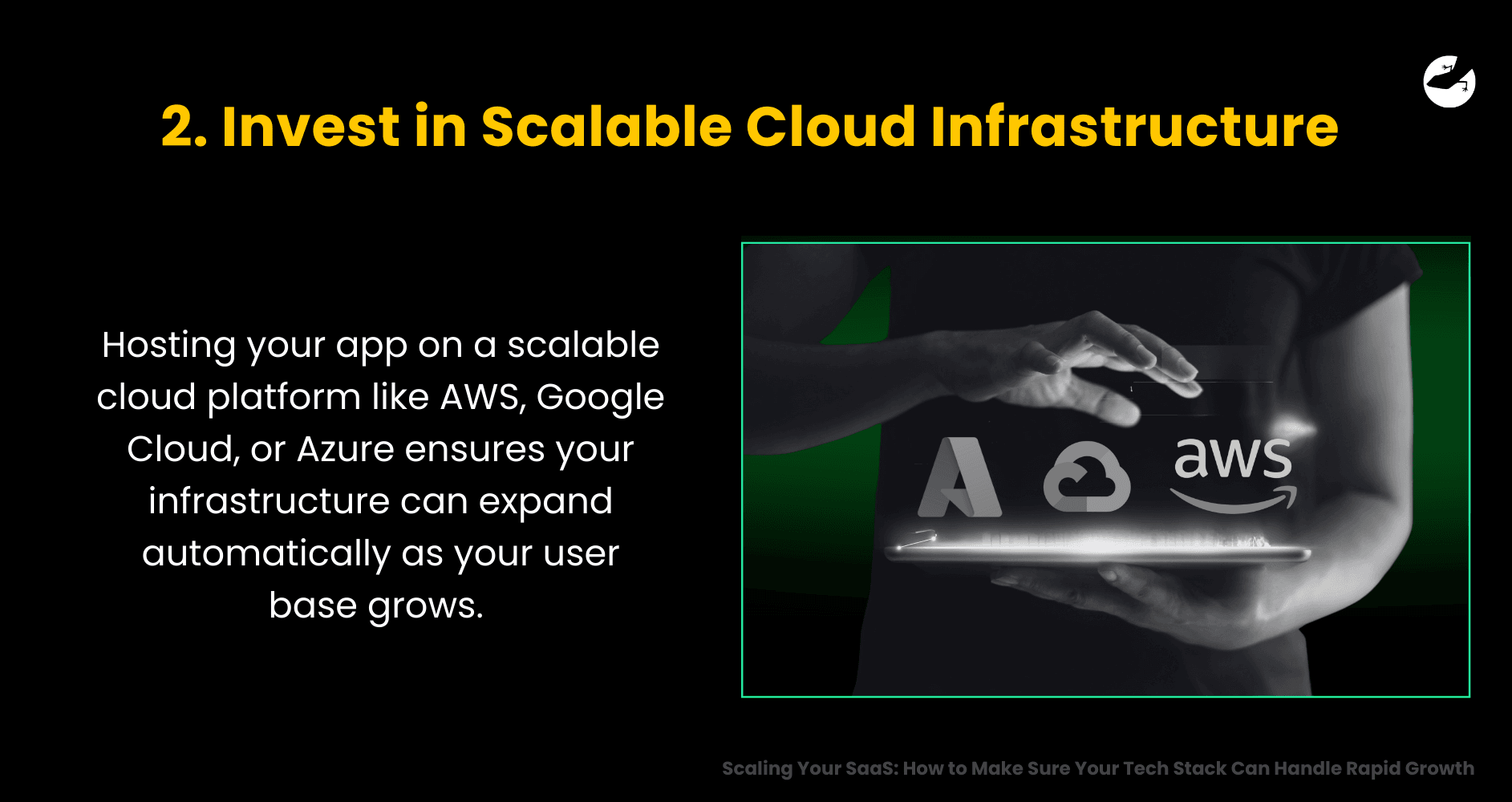
Pro Tip: Implement auto-scaling rules so your servers adapt in real time to traffic spikes, preventing crashes or slowdowns during peak times.
3. Optimize Your Database Strategy
As your app grows, so does your data. A single, monolithic database will quickly become a bottleneck. Consider:
- Database sharding (splitting large databases into smaller, faster ones)
- Read replicas for load balancing
- Choosing the right database technology (SQL vs NoSQL based on use case)
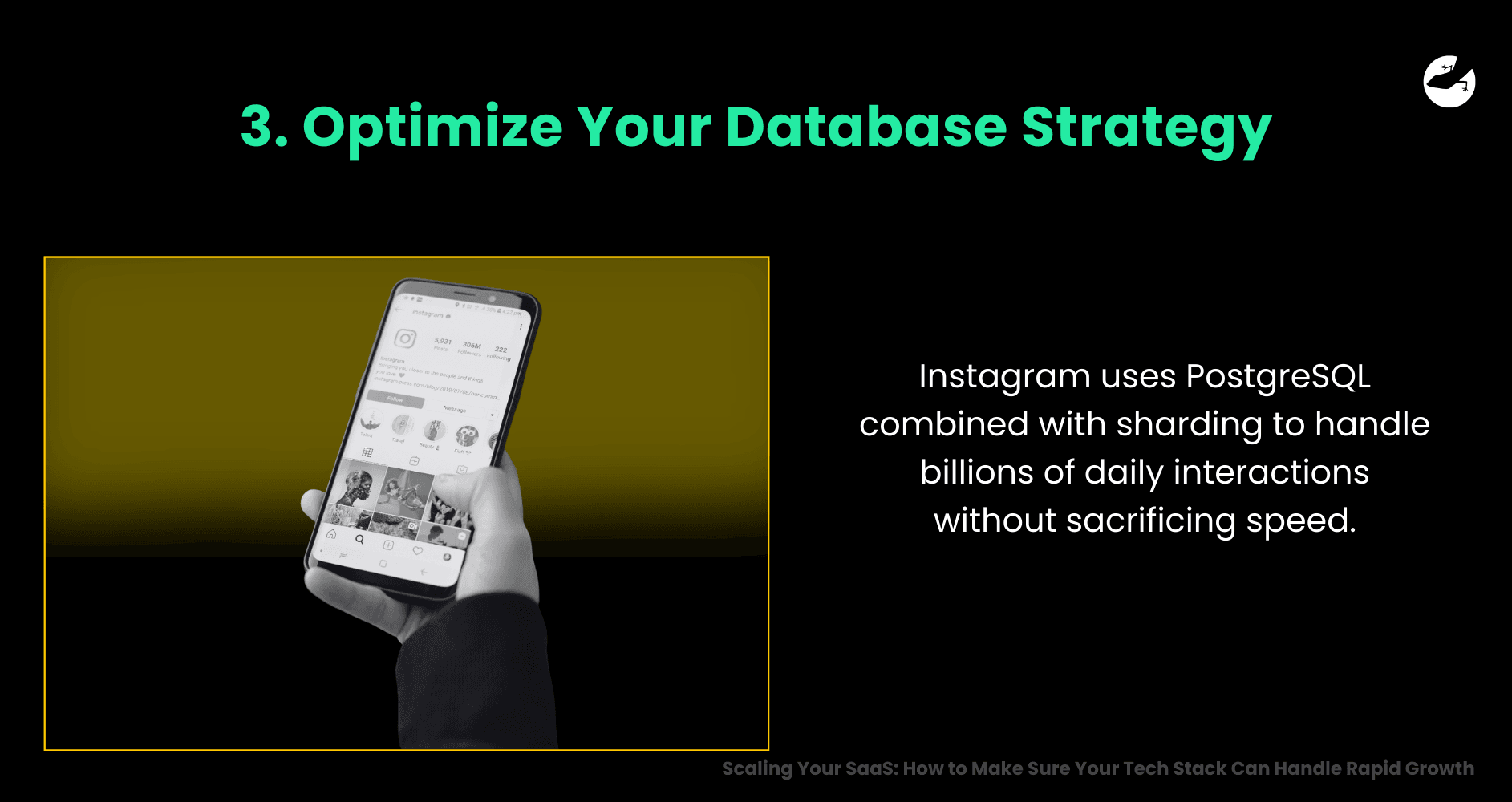
Example: Instagram uses PostgreSQL combined with sharding to handle billions of daily interactions without sacrificing speed.
4. Implement Caching and Content Delivery Networks (CDNs)
Improve app speed and reduce load on your servers by using caching (e.g., Redis, Memcached) and CDNs (e.g., Cloudflare, Akamai) to deliver static content closer to your users.
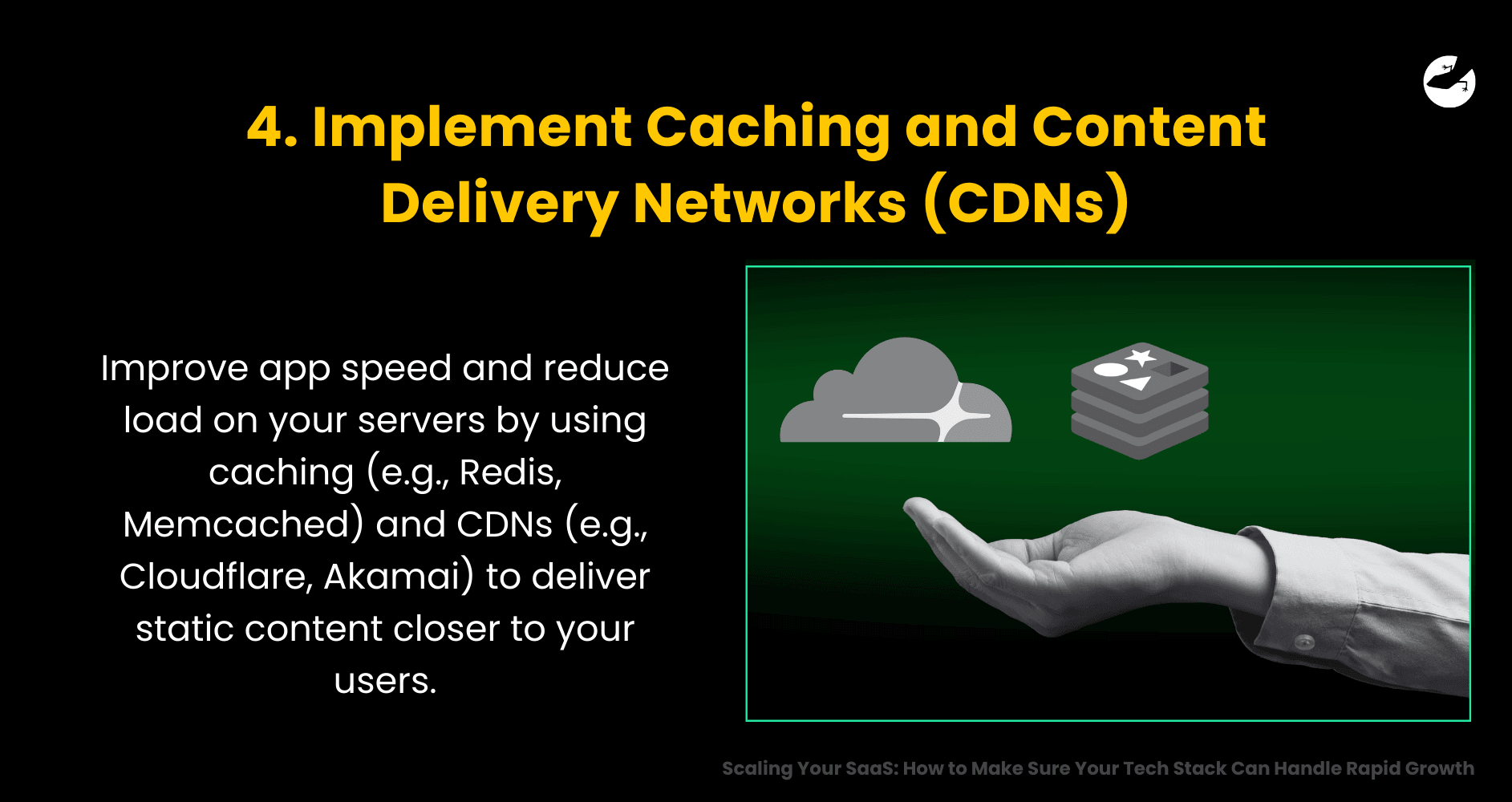
A faster experience keeps users engaged and improves SEO ranking—a double win.
5. Automate Testing and Deployment
A big part of technical scalability is maintaining quality while moving fast. Implement:
- CI/CD pipelines (Continuous Integration and Continuous Deployment)
- Automated testing suites for performance and security
- Rollback mechanisms in case something goes wrong
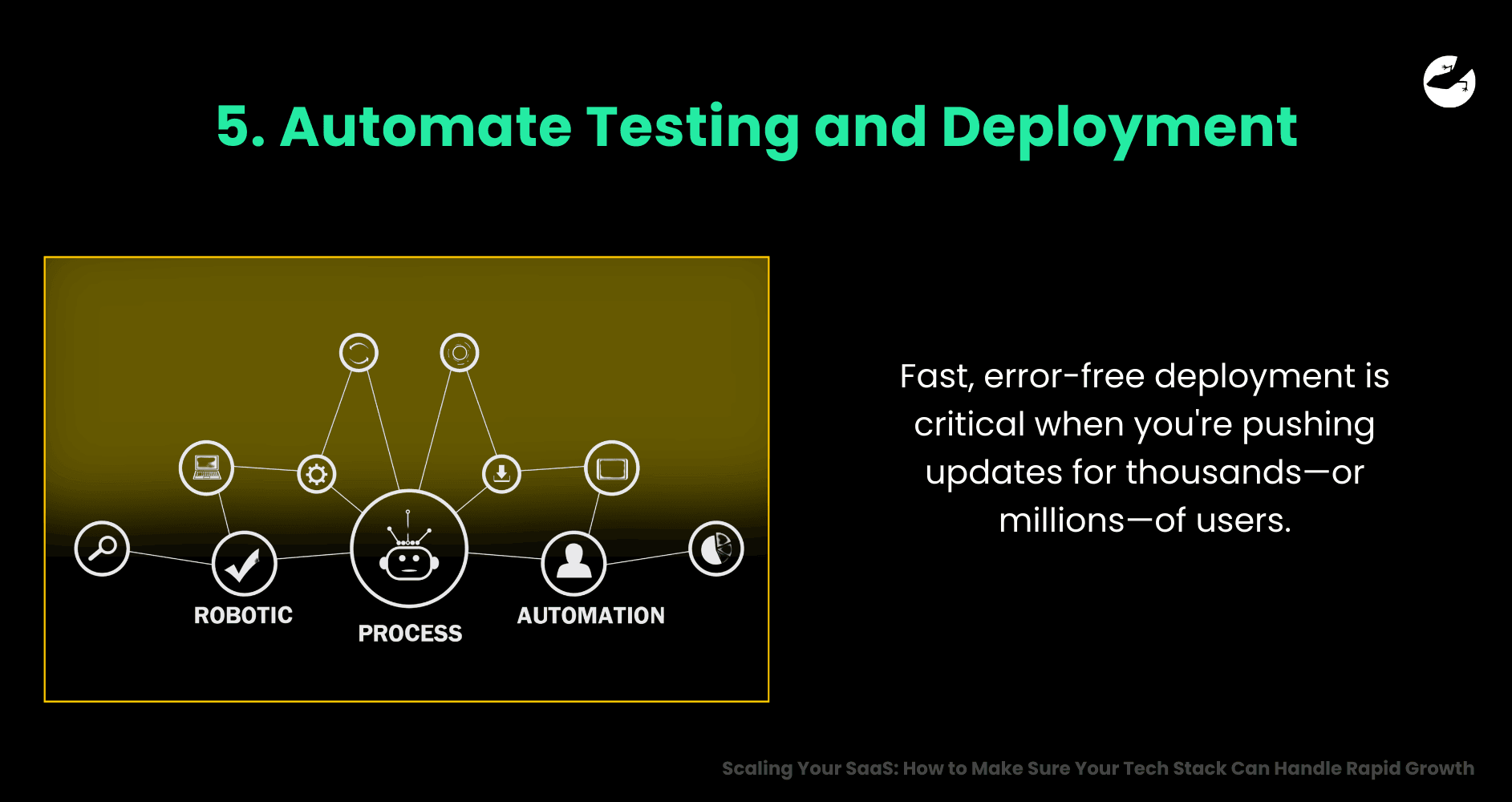
Why this matters: Fast, error-free deployment is critical when you're pushing updates for thousands—or millions—of users.
6. Monitor Everything
Use performance monitoring tools like Datadog, New Relic, or Prometheus to track your application’s health in real time. Identify bottlenecks before users do, and set up alerts for when things go off-track.
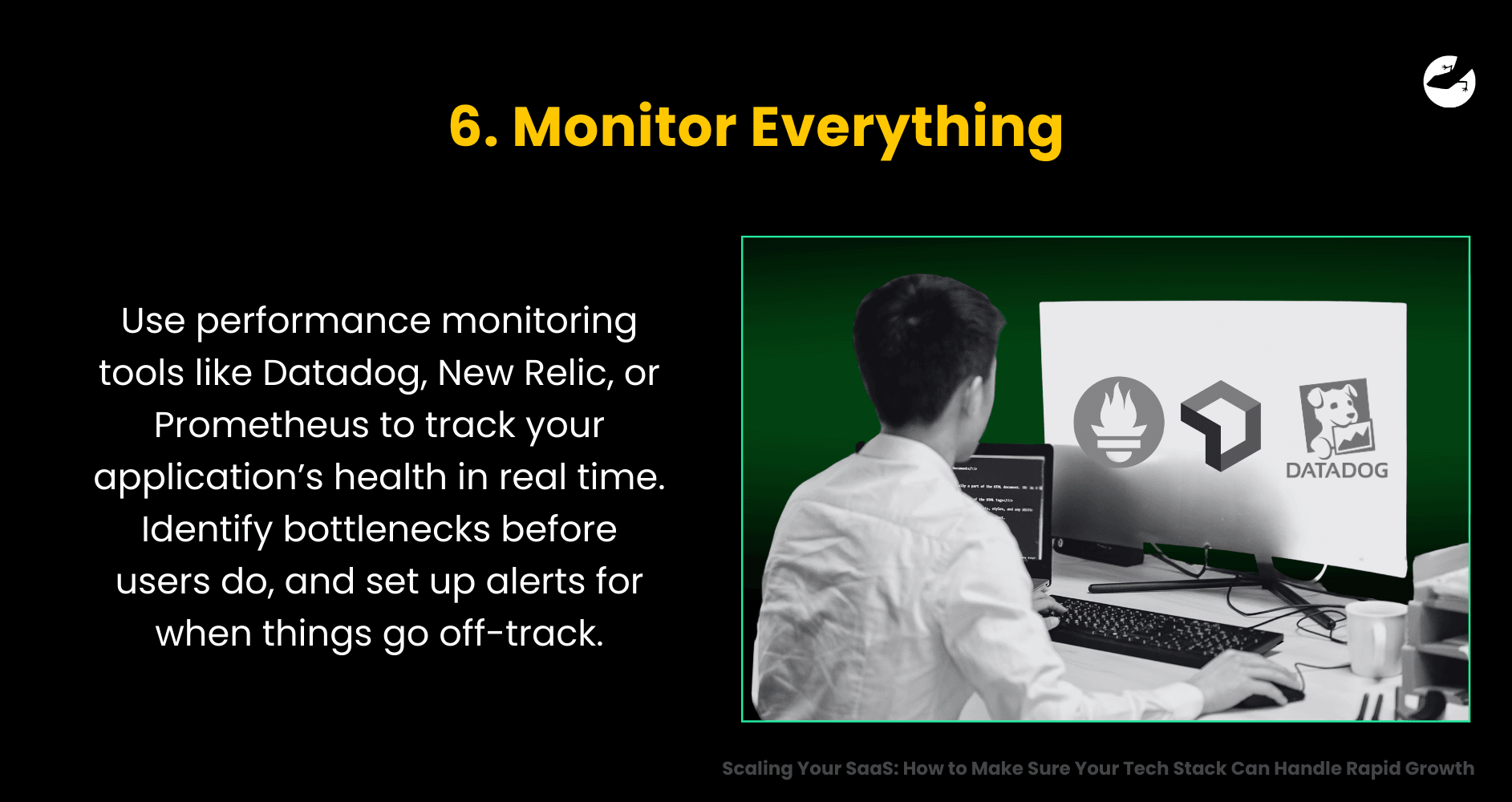
This data will also help you make better scaling decisions backed by metrics, not just guesswork.
Want to find out how much it costs to build your dream app or web app?
Common Pitfalls to Avoid When Scaling a SaaS Product

- Over-engineering too early: Don’t overcomplicate your stack before you have real user data.
- Ignoring security: Growth attracts attention. Make sure your app is protected against data breaches, DDoS attacks, and vulnerabilities.
- Neglecting UX/UI performance: Design matters. Ensure your app remains intuitive and fast even as features grow.
Real-World SaaS Growth Stories
Slack: From Startup Chat Tool to Enterprise-Scale Communication Platform
When Slack launched, it had just 8,000 users in its beta phase—but within a few years, it skyrocketed to over 10 million daily active users. What made that scale possible wasn’t just clever marketing or good UX. It was technical scalability at its core.
Slack’s team built a highly performant backend capable of handling real-time communication, message syncing across devices, and integrations with hundreds of third-party tools. They invested early in robust APIs, enabling their app to be used in a variety of enterprise workflows, while ensuring low latency and high availability across global regions.
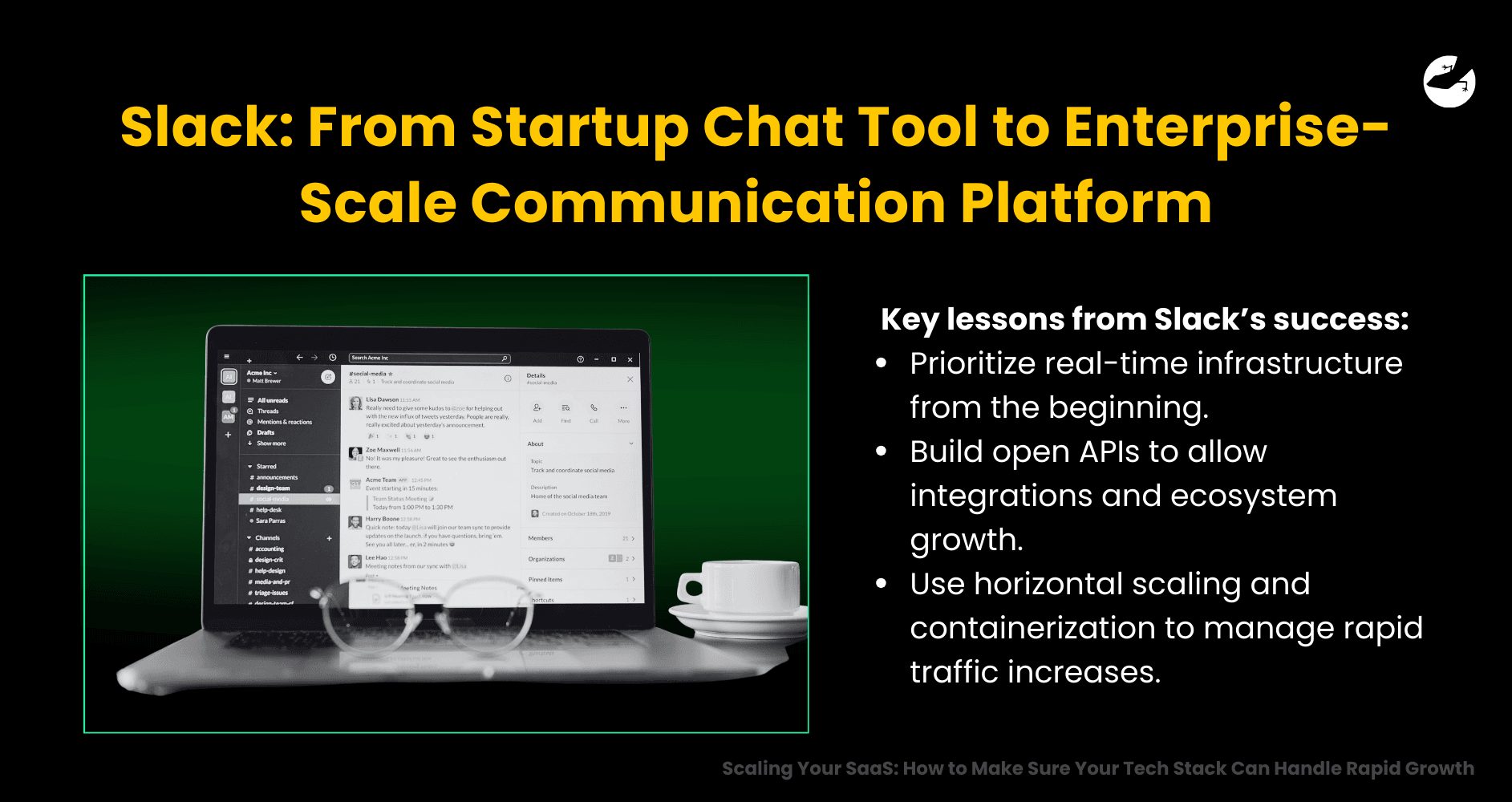
Key lessons from Slack’s success:
- Prioritize real-time infrastructure from the beginning.
- Build open APIs to allow integrations and ecosystem growth.
- Use horizontal scaling and containerization to manage rapid traffic increases.
Shopify: Scaling to Power Millions of Online Stores
Shopify began as a simple online store builder but is now a global e-commerce platform serving 1.7+ million merchants across 175 countries. What’s under the hood of that massive success? A modular, scalable architecture and relentless focus on platform reliability.
Shopify’s tech stack is built to handle thousands of concurrent storefronts, flash sales, and seasonal spikes like Black Friday—without slowing down. They’ve achieved this by:
- Using cloud computing infrastructure (primarily Google Cloud) to scale storage and compute resources elastically.
- Implementing load balancing and traffic routing to ensure consistent uptime.
- Investing in developer tools and APIs to allow third parties to build on top of their platform, adding value without bloating core services.
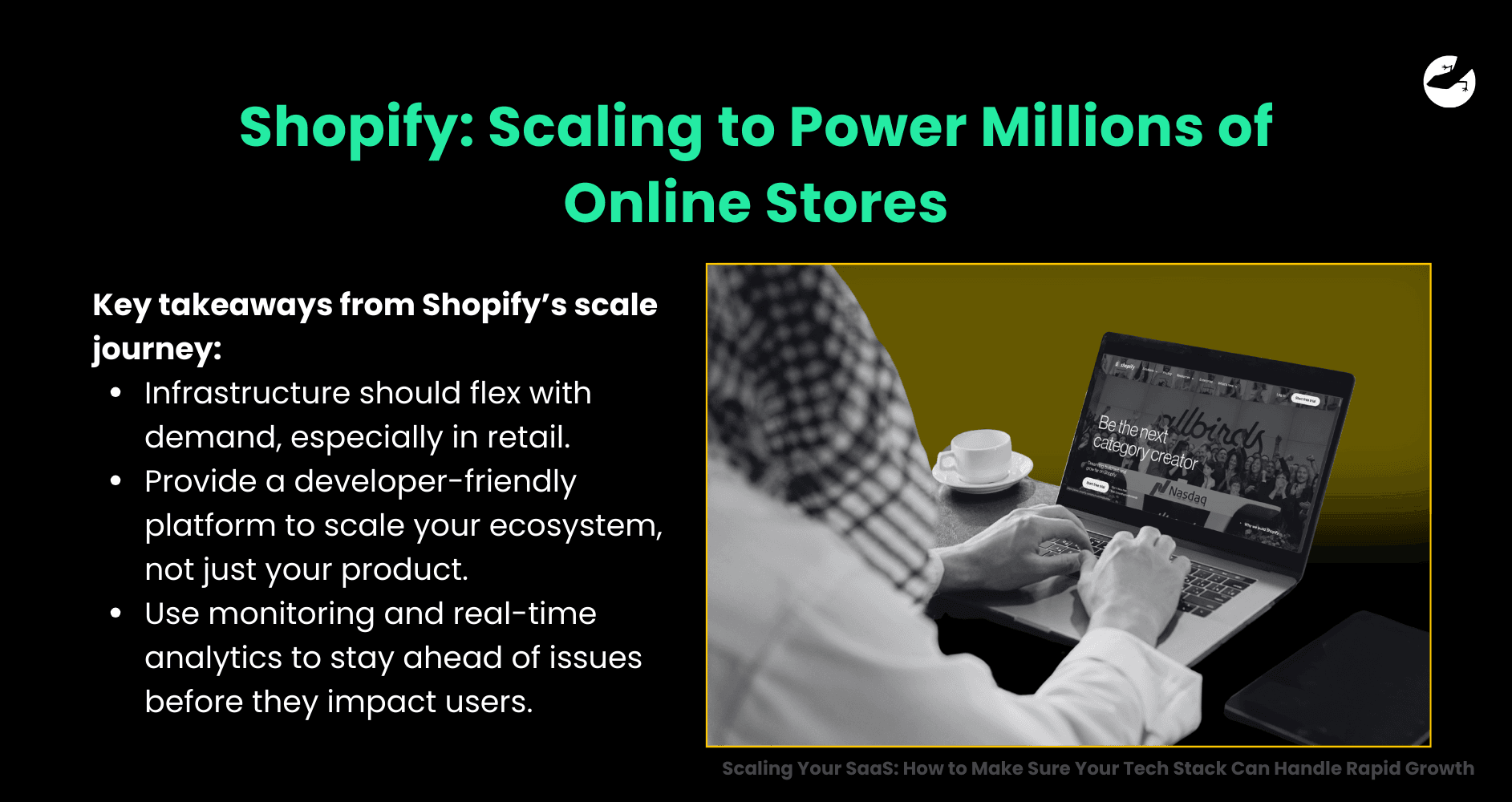
Key takeaways from Shopify’s scale journey:
- Infrastructure should flex with demand, especially in retail.
- Provide a developer-friendly platform to scale your ecosystem, not just your product.
- Use monitoring and real-time analytics to stay ahead of issues before they impact users.
Lizard Global Helps SaaS Startups Scale Successfully
At Lizard Global, we don’t just build software—we engineer growth-ready digital platforms. Whether you're at MVP stage or scaling to serve thousands of users, our team of experts helps ensure your SaaS application is:
- Built on scalable architecture from the start
- Optimized for performance, reliability, and security
- Equipped with CI/CD pipelines and automated testing
- Designed with a future-proof UI/UX to delight users as you grow

With our track record in building and scaling SaaS products across industries—from finance to logistics and healthcare—you’ll gain a trusted tech partner ready to scale with you.
Ready to scale your SaaS with confidence? Let’s chat about how we can future-proof your product and unlock its full potential.




